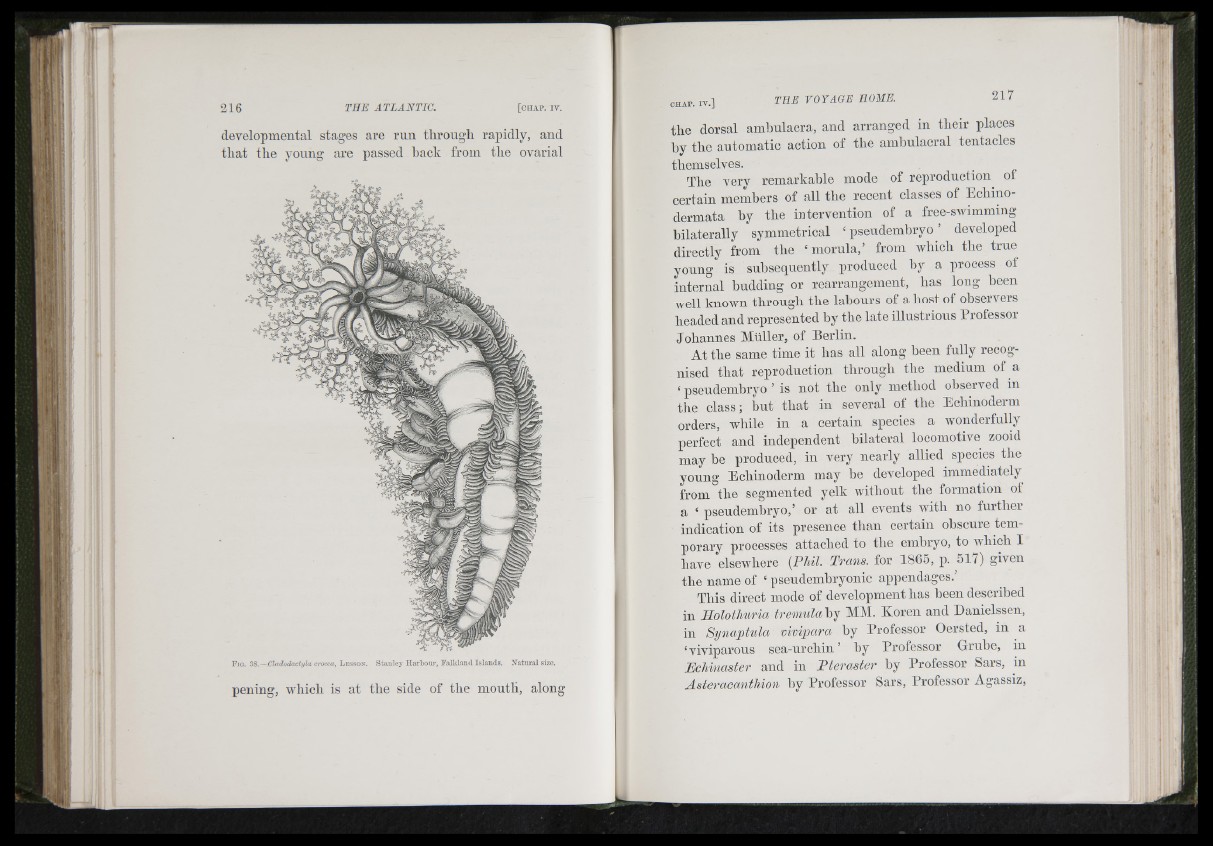
tl.
developmental stages are run tlirougli rapidly, and
that the yonng are passed hack from the ovarial
Fig. 3S.—Cladodactyla crocea, L e s s o n . Stanley Harbour, Falkland Islands. Natural size.
pening, which is at the side of the mouth, along
the dorsal ambulacra, and arranged in their places
hy the automatic action of the amhulacral tentacles
themselves.
The very remarkable mode of reproduction of
certain members of all the recent classes of Echino-
dermata hy the intervention of a free-swimming
bilaterally symmetrical ‘ pseudembryo ’ developed
directly from the ‘ morula,’ from which the true
yonng is subsequently produced hy a process of
internal budding or rearrangement, has long heen
well known through the labours of a host of observers
headed and represented by the late illustrious Professor
Johannes Müller, of Berlin.
At the same time it has all along been fully recognised
that reproduction through the medium of a
‘ psendembryo ’ is not the only method observed in
the class; but that in several of the Echinoderm
orders, while in a certain species a wonderfully
perfect and independent bilateral locomotive zooid
may he produced, in very nearly allied species the
young Echinoderm may be developed immediately
from the segmented yelk without the formation of
a ‘ psendembryo,’ or at all events with no further
indication of its presence than certain obscure temporary
processes attached to the embryo, to ndiich I
have elsewhere [Phil. Trans, for 1865, p. 51/) given
the name of ‘ psendemhryonic appendages.’
This direct mode of development has been described
in Ilololhuria Iremulahj MM. Koren and Danielssen,
in S'ljnaplula vivipara, hy Professor Oersted, in a
‘viviparous sea-urchin ’ hy Professor Gruhe, in
Pchinasler and in Pterasler hy Professor Sars, in
Asteracanlhion hy Professor Sars, Professor Agassiz,